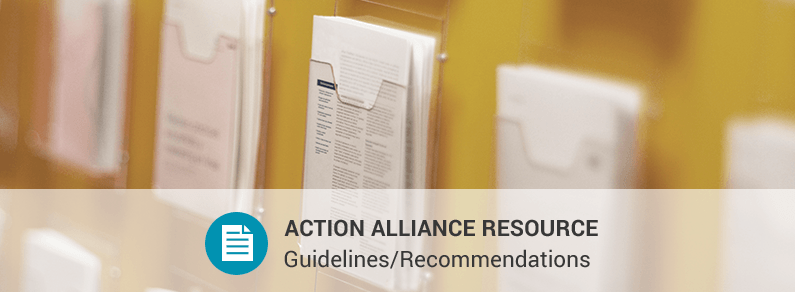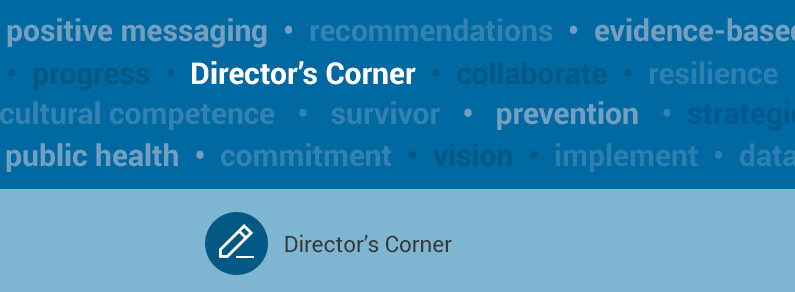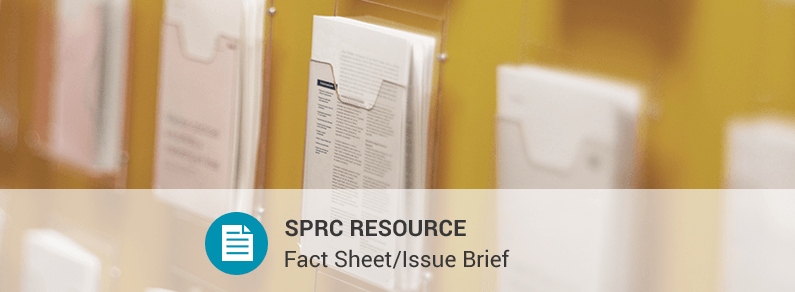Provide for Immediate and Long-Term Postvention

When a person dies by suicide, many others are deeply affected:
- One study estimated that 115 people are exposed to each suicide, with 1 in 5 reporting that this experience had a devastating impact or caused a major life disruption.1
- Everyone grieves differently. Some people may experience short-term reactions, while others may have long-term responses.
- Exposure to suicide can lead to an array of negative outcomes, including mental health issues, social isolation, and an increased risk of suicide.1
What is Postvention?
Postvention is a term often used in the suicide prevention field. The definition below is from the U.S. national guidelines developed by the Survivors of Suicide Loss Task Force.1
[Postvention is] an organized response in the aftermath of a suicide to accomplish any one or more of the following:
- To facilitate the healing of individuals from the grief and distress of suicide loss
- To mitigate other negative effects of exposure to suicide
- To prevent suicide among people who are at high risk after exposure to suicide (p. 5)
A Shared Vision: U.S. National Guidelines
In 2015, the Survivors of Suicide Loss Task Force of the National Action Alliance for Suicide Prevention released its report Responding to Grief, Trauma, and Distress After a Suicide: U.S. National Guidelines. In preparing this report, the task force was inspired by the following vision: “a world where communities and organizations provide everyone who is exposed to a suicide access to effective services and support immediately—and for as long as necessary—to decrease their risk of suicide, to strengthen their mental health, and to help them cope with grief.”1
Key principles for creating a comprehensive postvention effort include:
- Planning ahead to address individual and community needs
- Providing immediate and long-term support
- Tailoring responses and services to the unique needs of suicide loss survivors
- Involving survivors of suicide loss in planning and implementing postvention efforts
All settings should incorporate postvention as a component of a comprehensive approach to suicide prevention.
Take Action
All settings should incorporate postvention as a component of a comprehensive approach to suicide prevention. All communities and organizations should be prepared to respond to a suicide death, including tribes, towns, senior living facilities, workplaces, and health care providers.
Plan ahead:
- Develop a plan and protocols in advance to enable your institution or community to respond quickly and compassionately in the crisis period after a suicide death.
- Be prepared to respond to the immediate emotional needs of people affected by the crisis as well as to the long-term effects and risks that may be associated with exposure.
- Educate and build relationships among those who will interact with bereaved people to enable a coordinated community response rather than fragmented services. Involve law enforcement, emergency medical services, community mental health, social service agencies, and other institutions.
- Consider adopting the Active Postvention Model, in which trained volunteer teams reach out to provide support and resources to survivors as soon after a suicide death as possible. It differs from the traditional (passive) model of postvention where survivors only get help if they seek it themselves. The Survivor Outreach Team Training Manual will help you set up and train a survivor outreach team.
Respond effectively:
- Immediately following a suicide, work with the news media to encourage safe reporting.
- Work with those affected by the suicide death to aid mourning in ways that avoid increasing the risk of contagion.
- Build capacity for ongoing support and treatment, including professional and peer-support options, for those who need it.
- Provide support and guidance for friends and family members of the bereaved to help them provide effective ongoing support.
For more action steps, see the U.S. National Guidelines. Appendix B provides recommendations specific to national organizations; state and tribal governments; communities and local officials; schools, universities, businesses, and workplaces; mental health and public health agencies; professional organizations and accrediting bodies; faith communities and leaders; funeral professionals; first responders; social media and online communities; media; loss and attempt survivors; and researchers.
The resources on this page will help you respond appropriately to a suicide death and to support those touched by suicide.
Reference
- Survivors of Suicide Loss Task Force. (2015, April). Responding to grief, trauma, and distress after a suicide: U.S. National Guidelines (p. 1). Washington, DC: National Action Alliance for Suicide Prevention. Retrieved from http://www.sprc.org/online-library/responding-grief-trauma-and-distress-after-suicide-us-national-guidelines
Recommended Resources

Responding to Grief, Trauma, and Distress After a Suicide: U.S. National Guidelines

Director’s Corner: Postvention as Prevention

After a Suicide: A Toolkit for Schools, Second Edition

Resources for Suicide Postvention Planning

A Manager's Guide to Suicide Postvention in the Workplace: 10 Action Steps for Dealing with the Aftermath of Suicide

